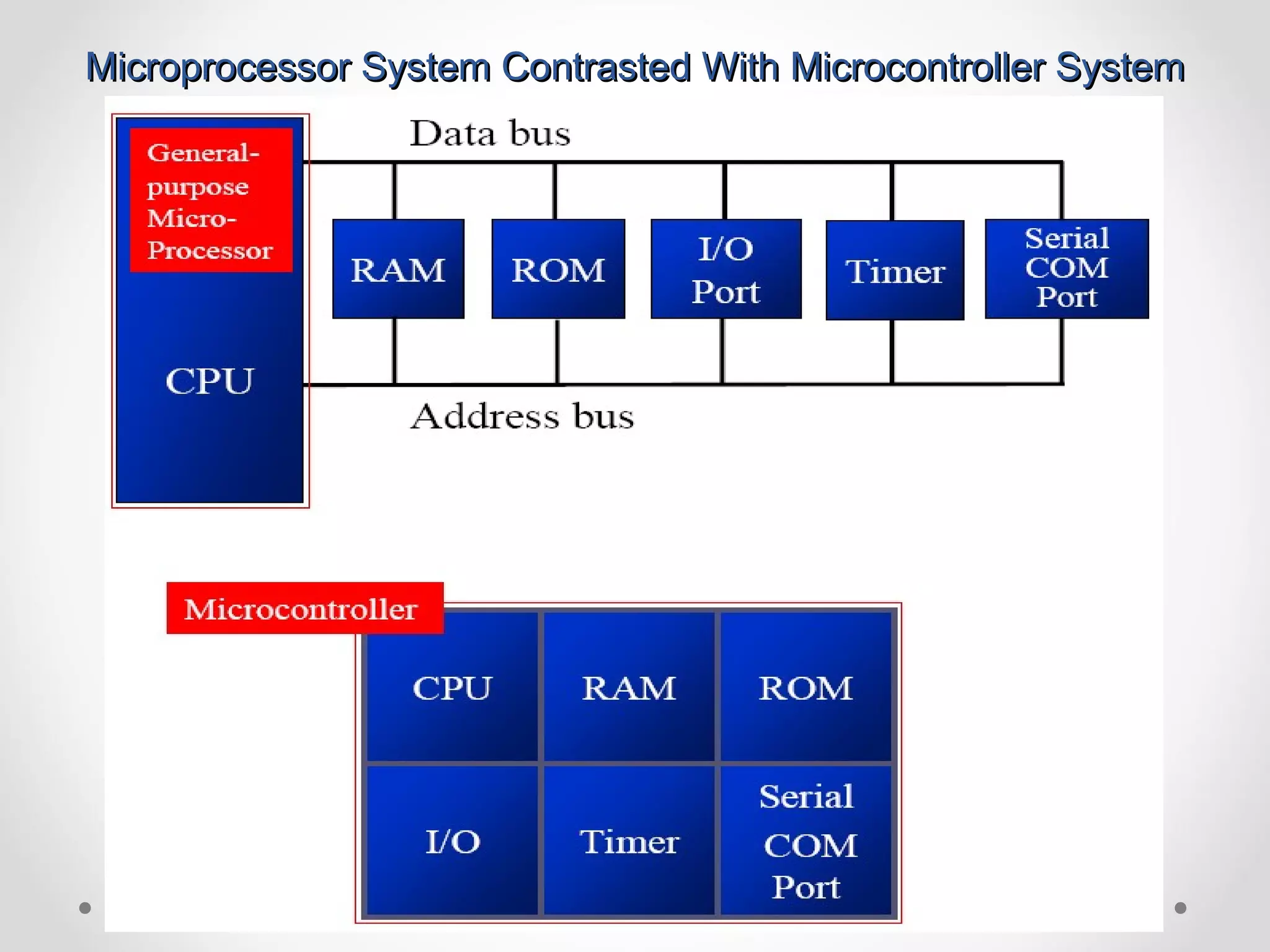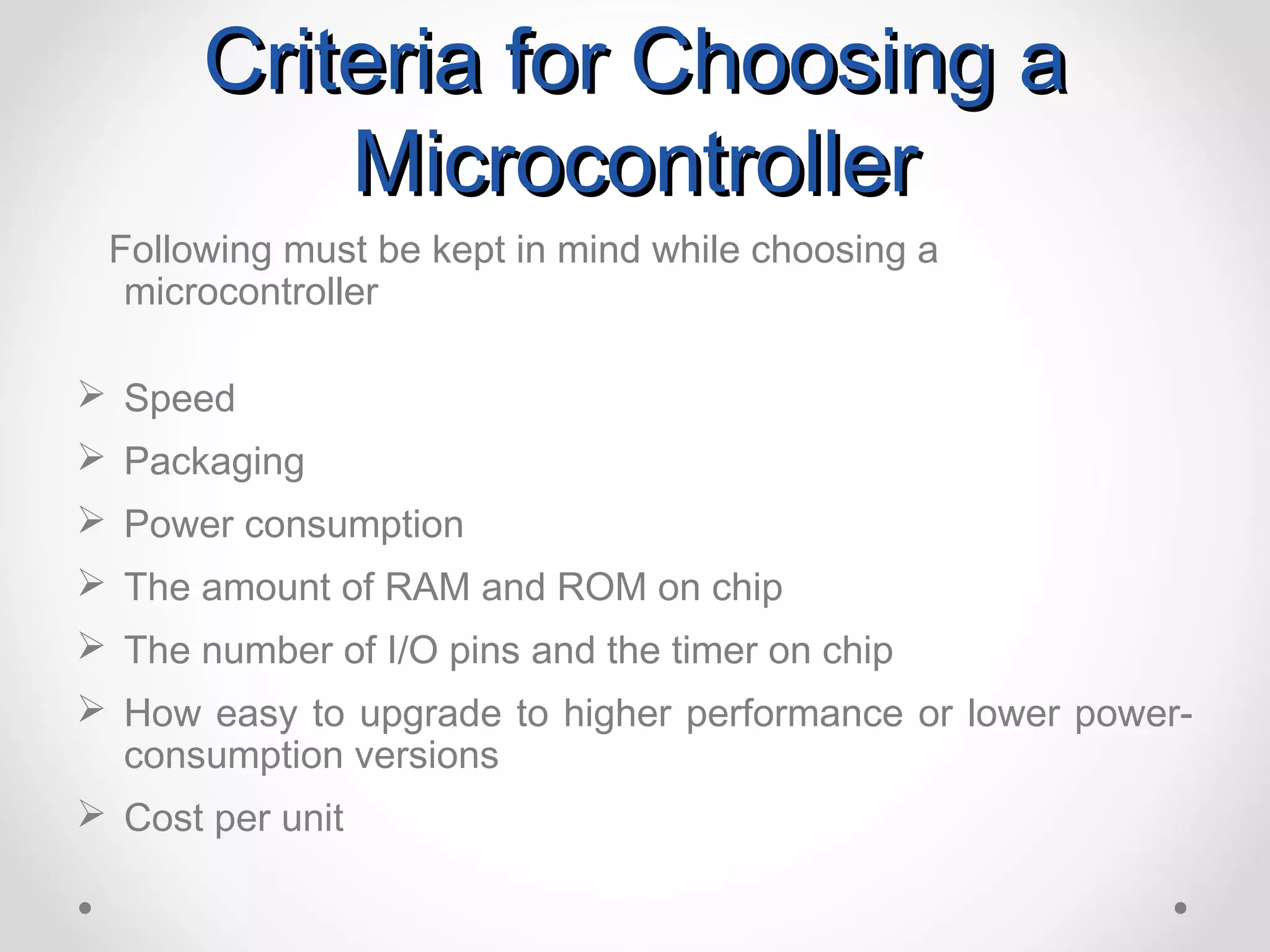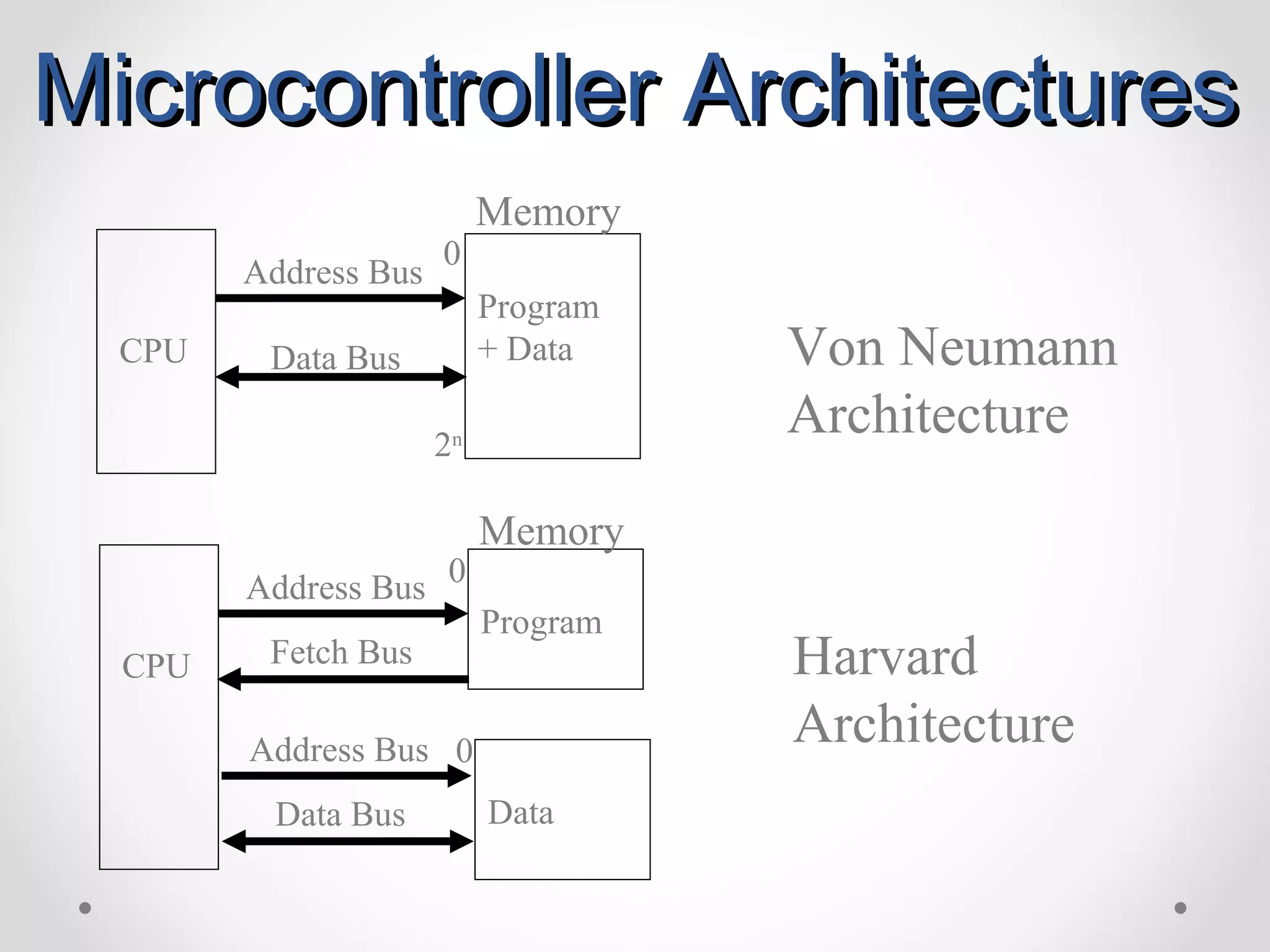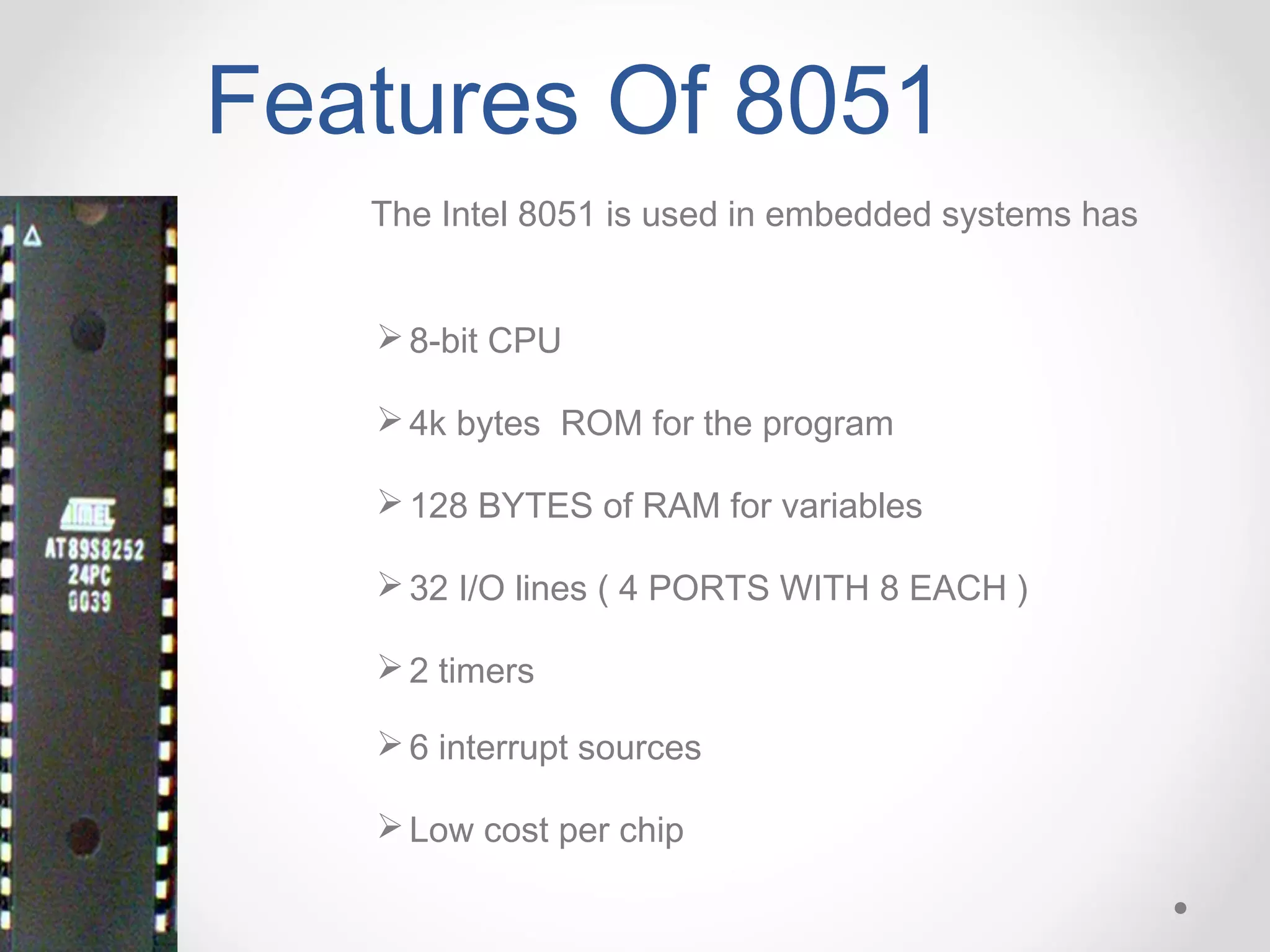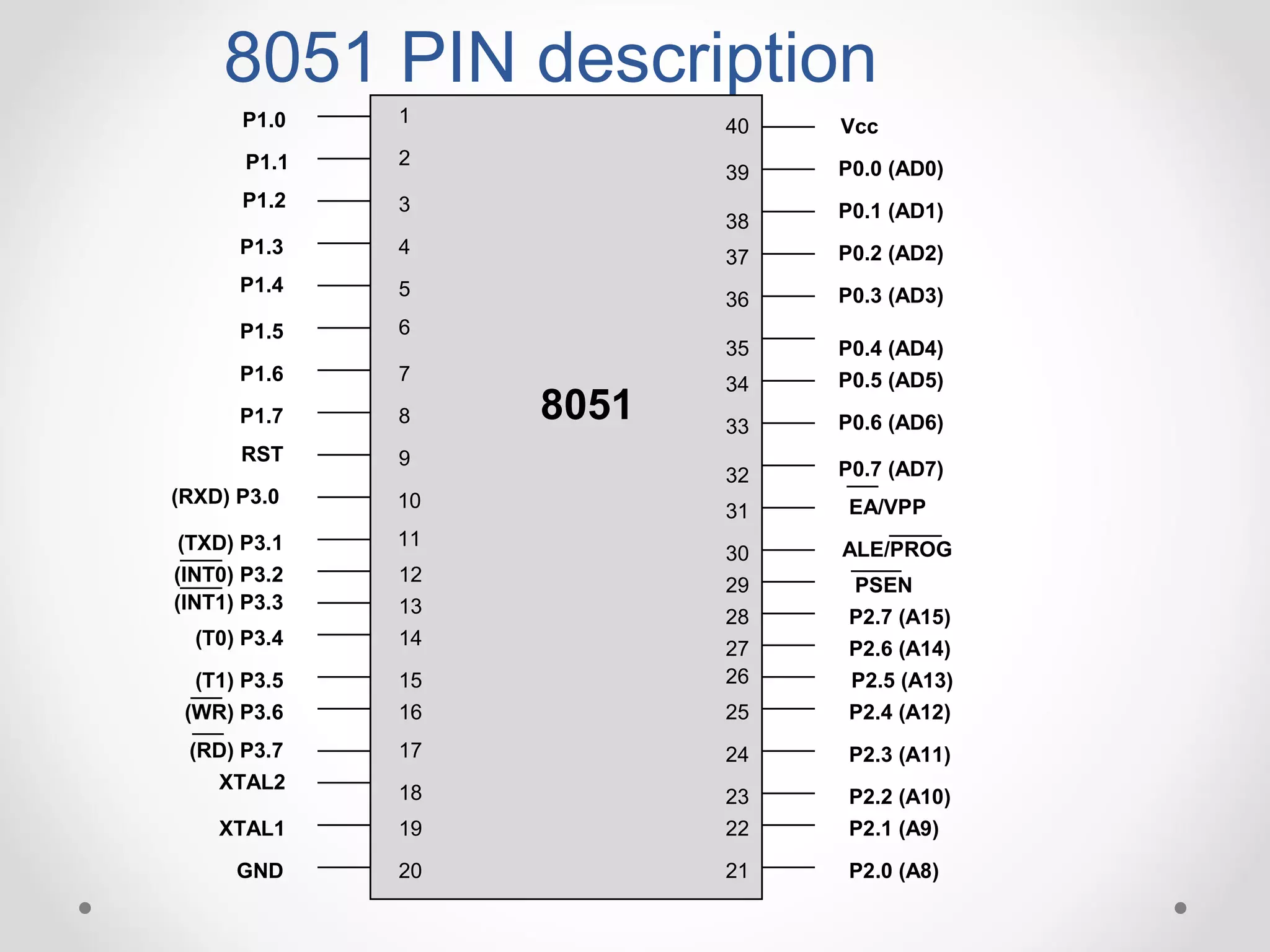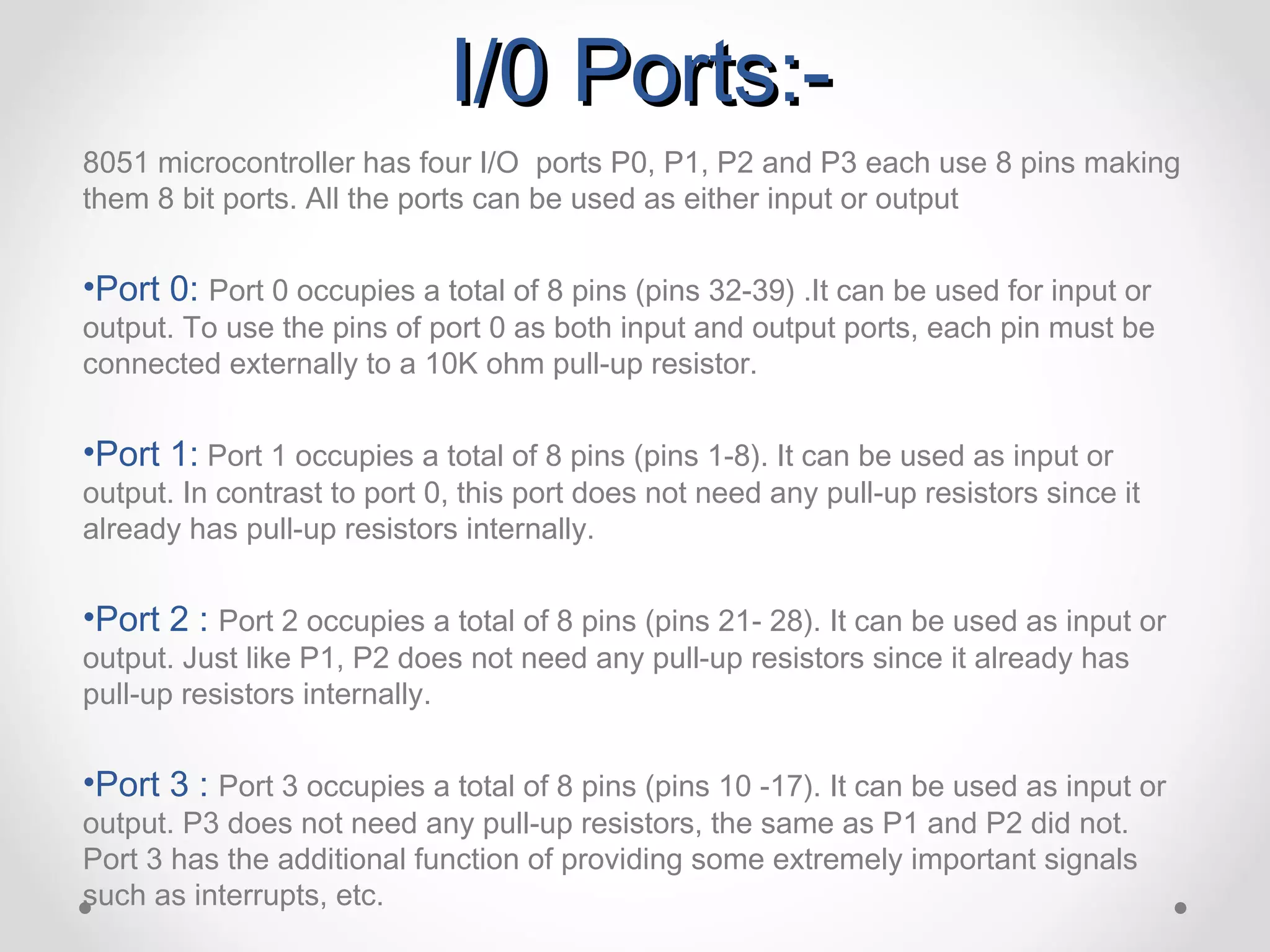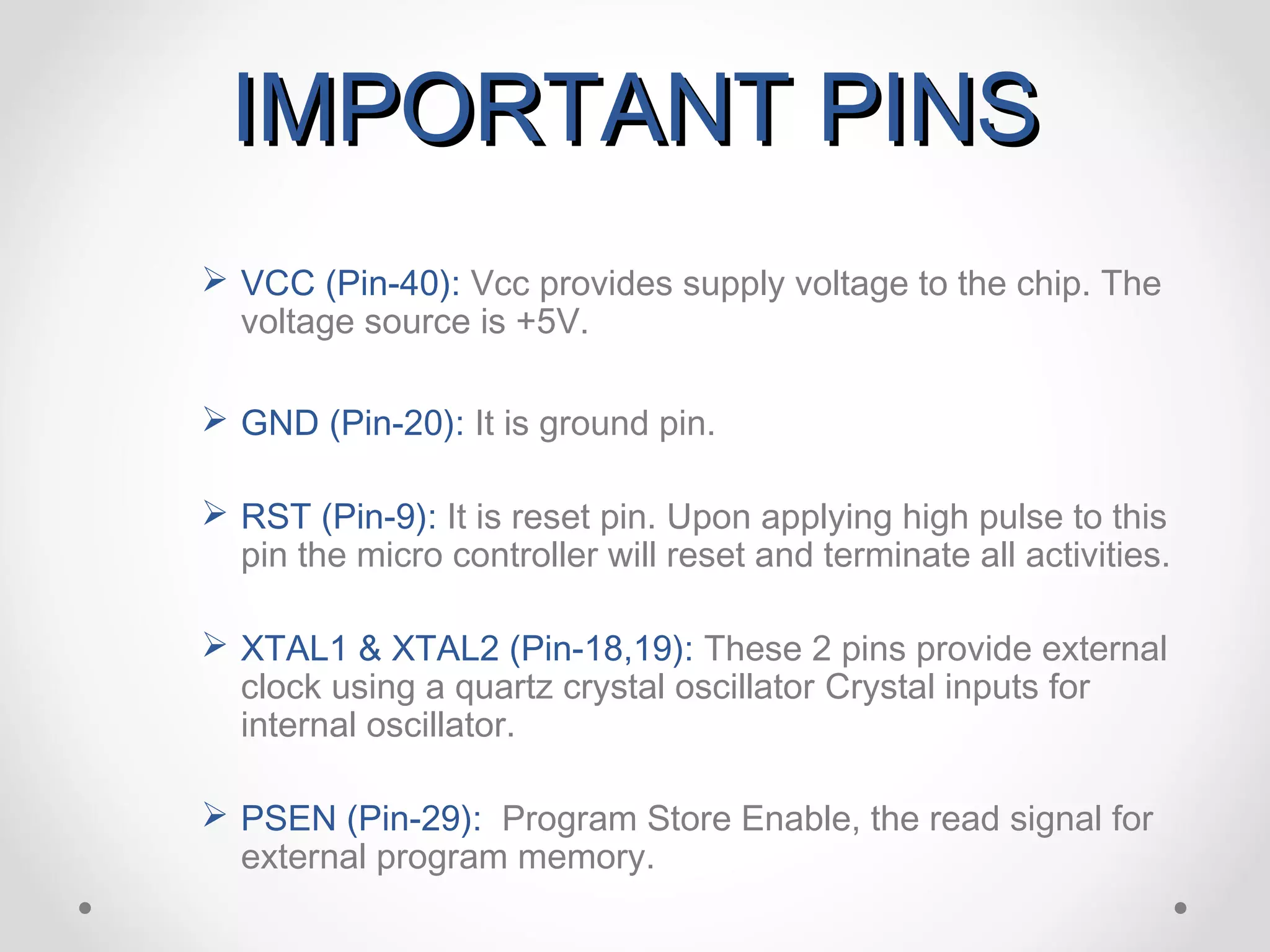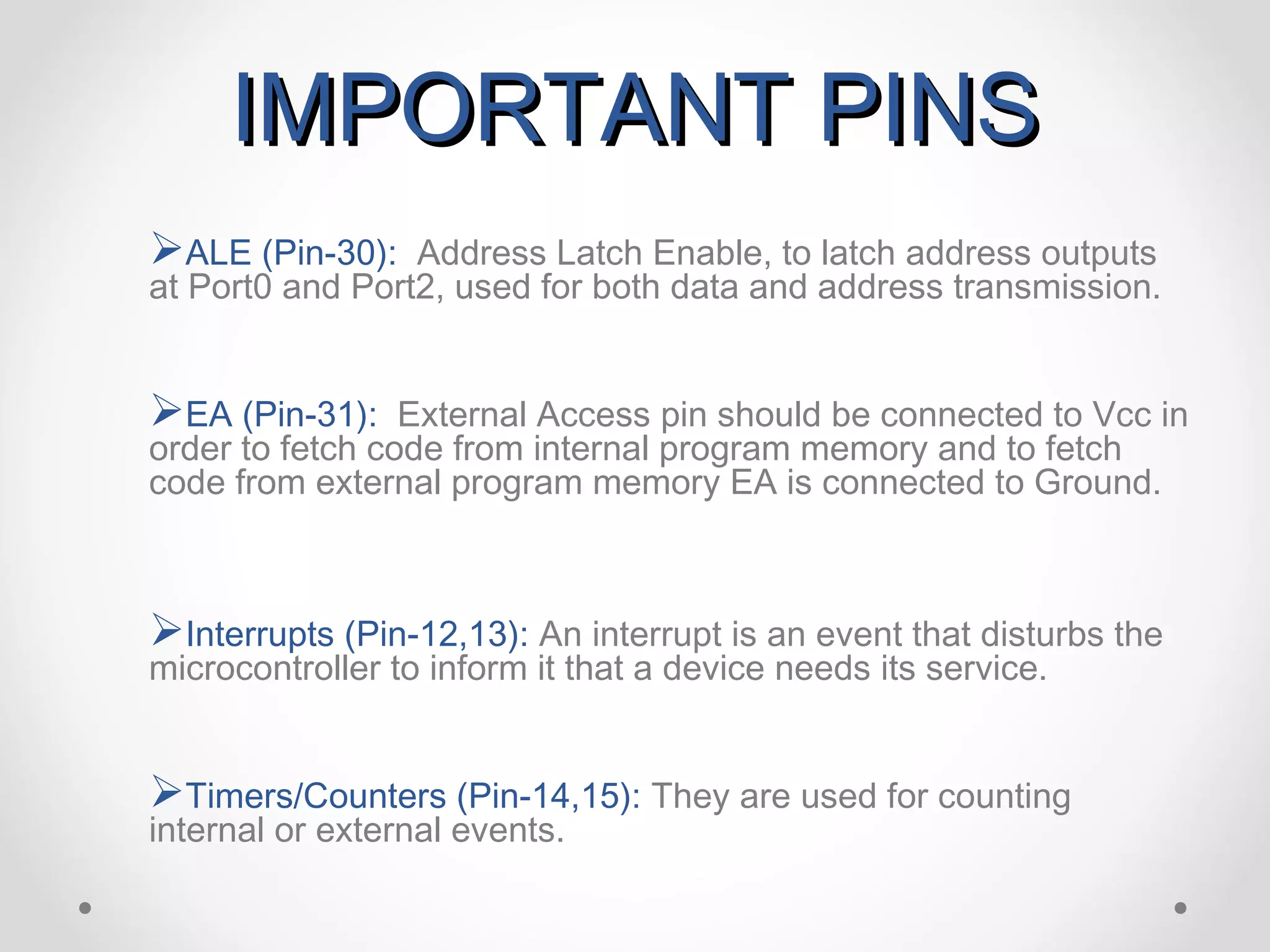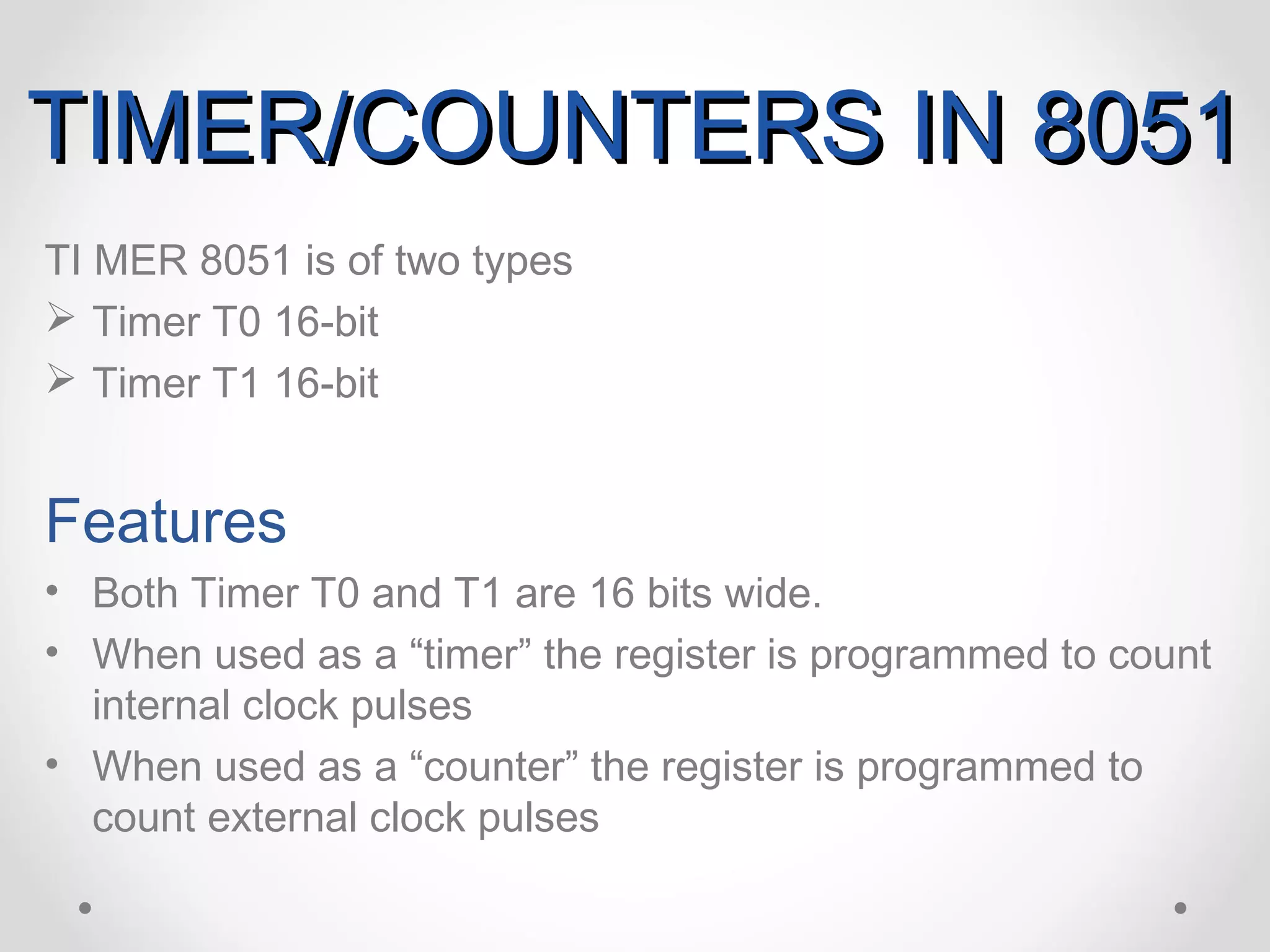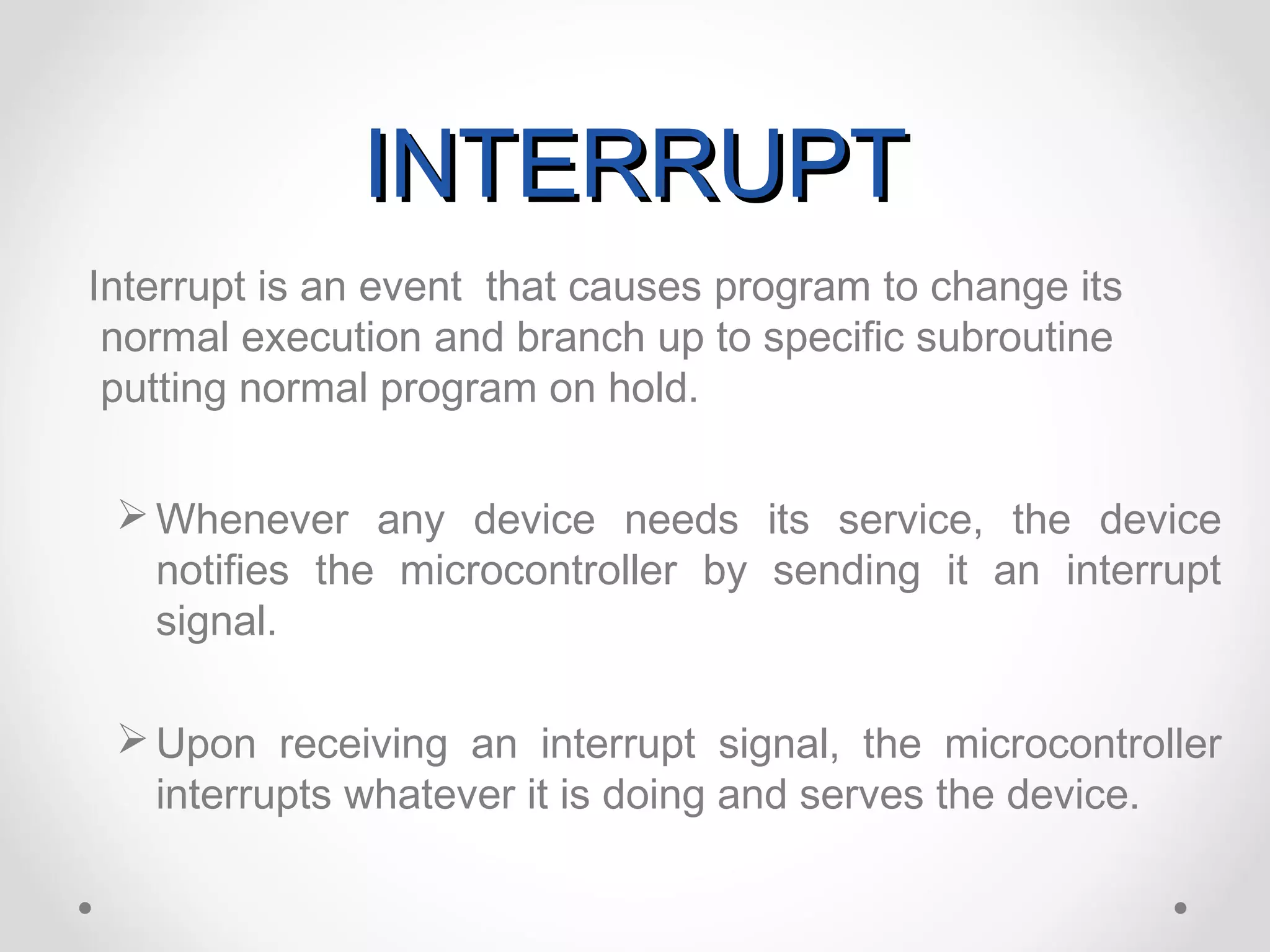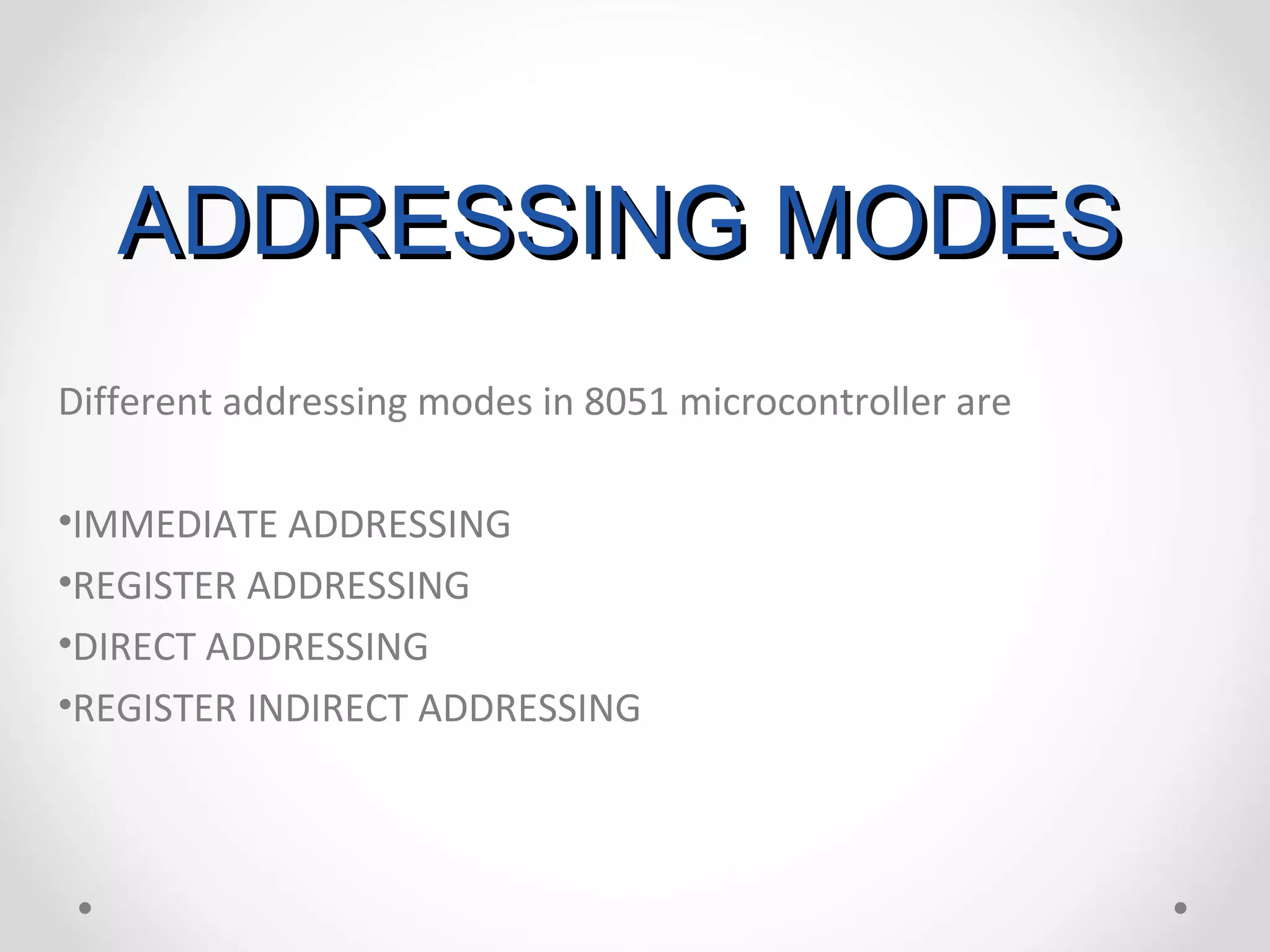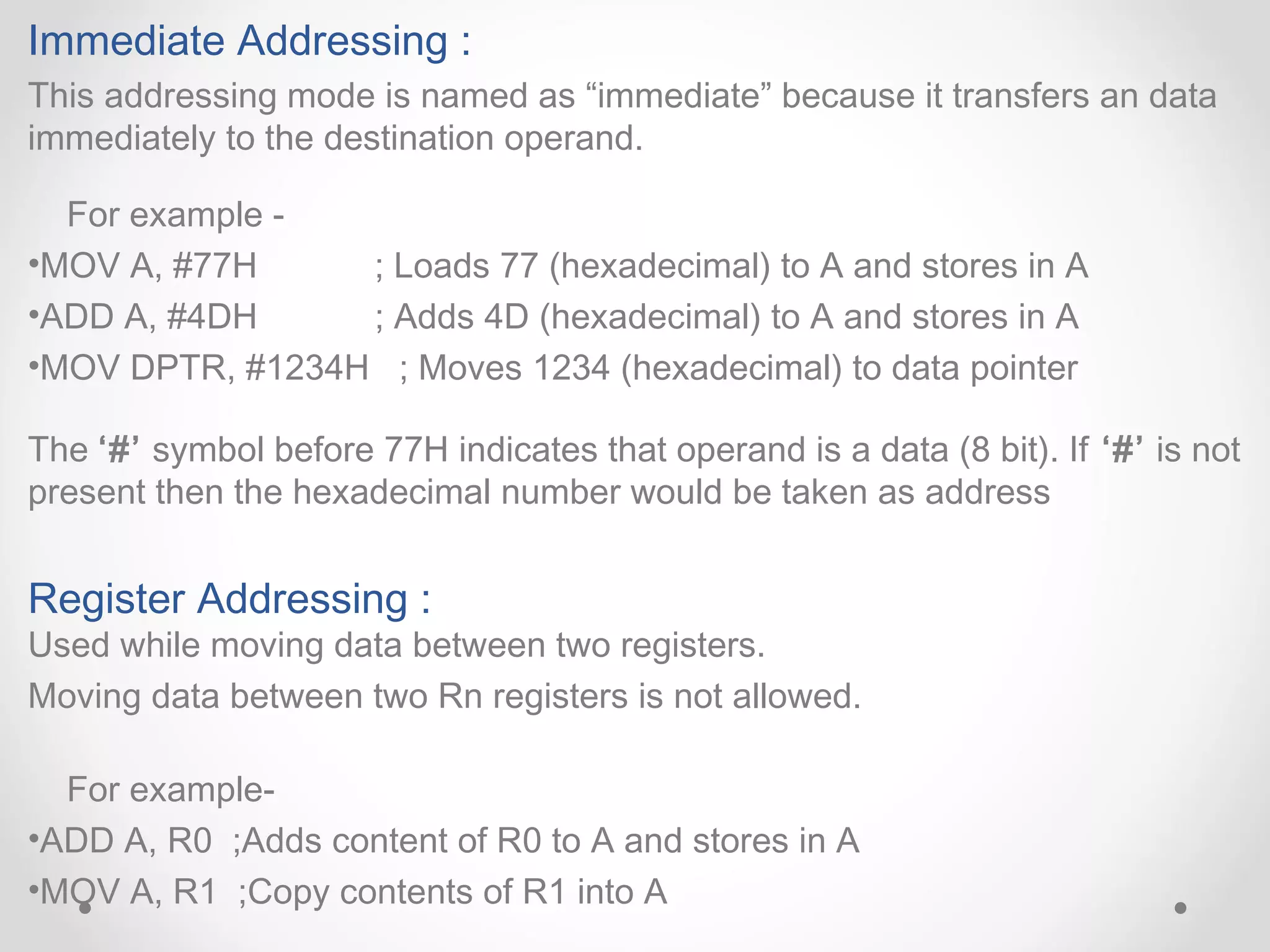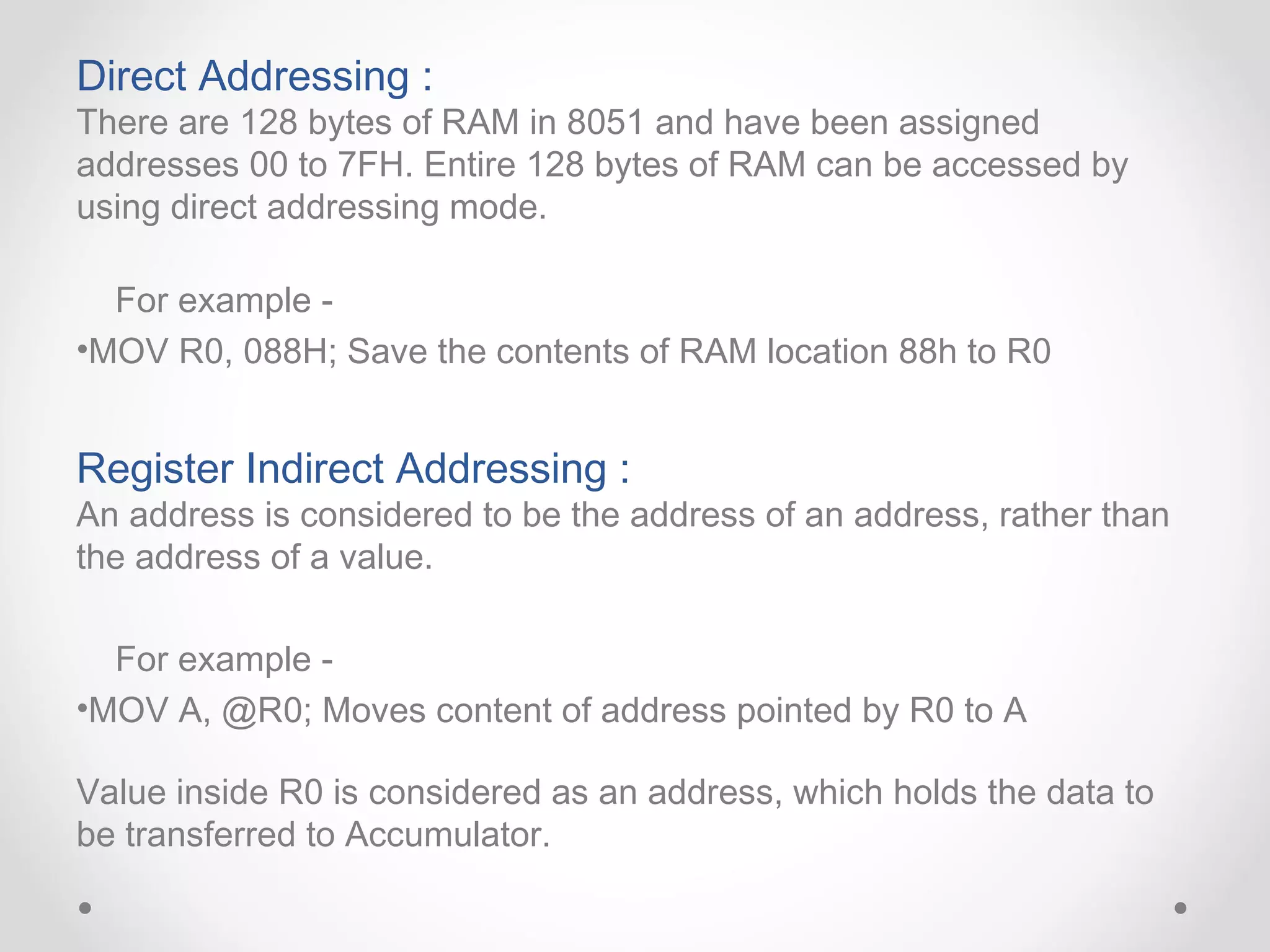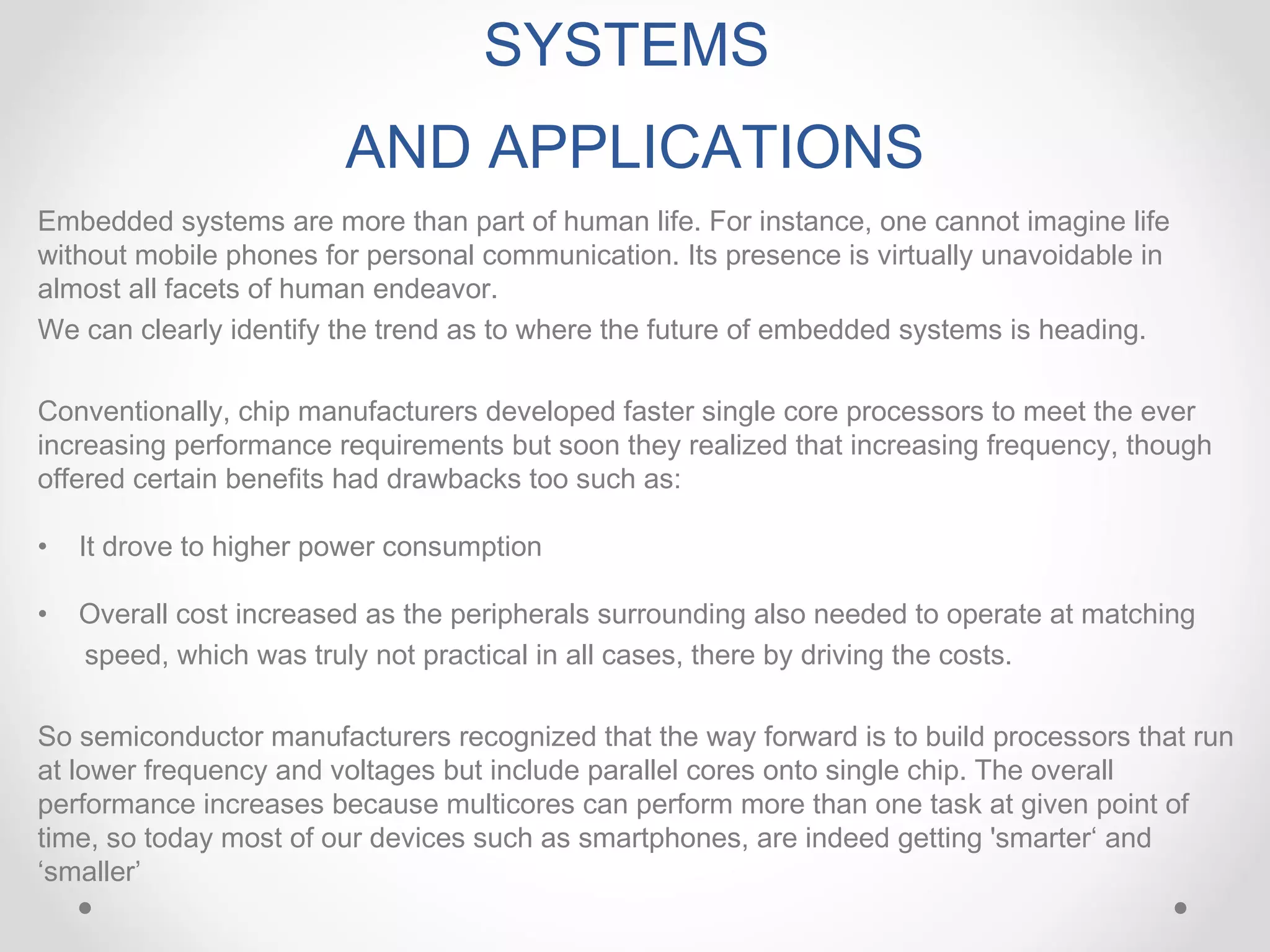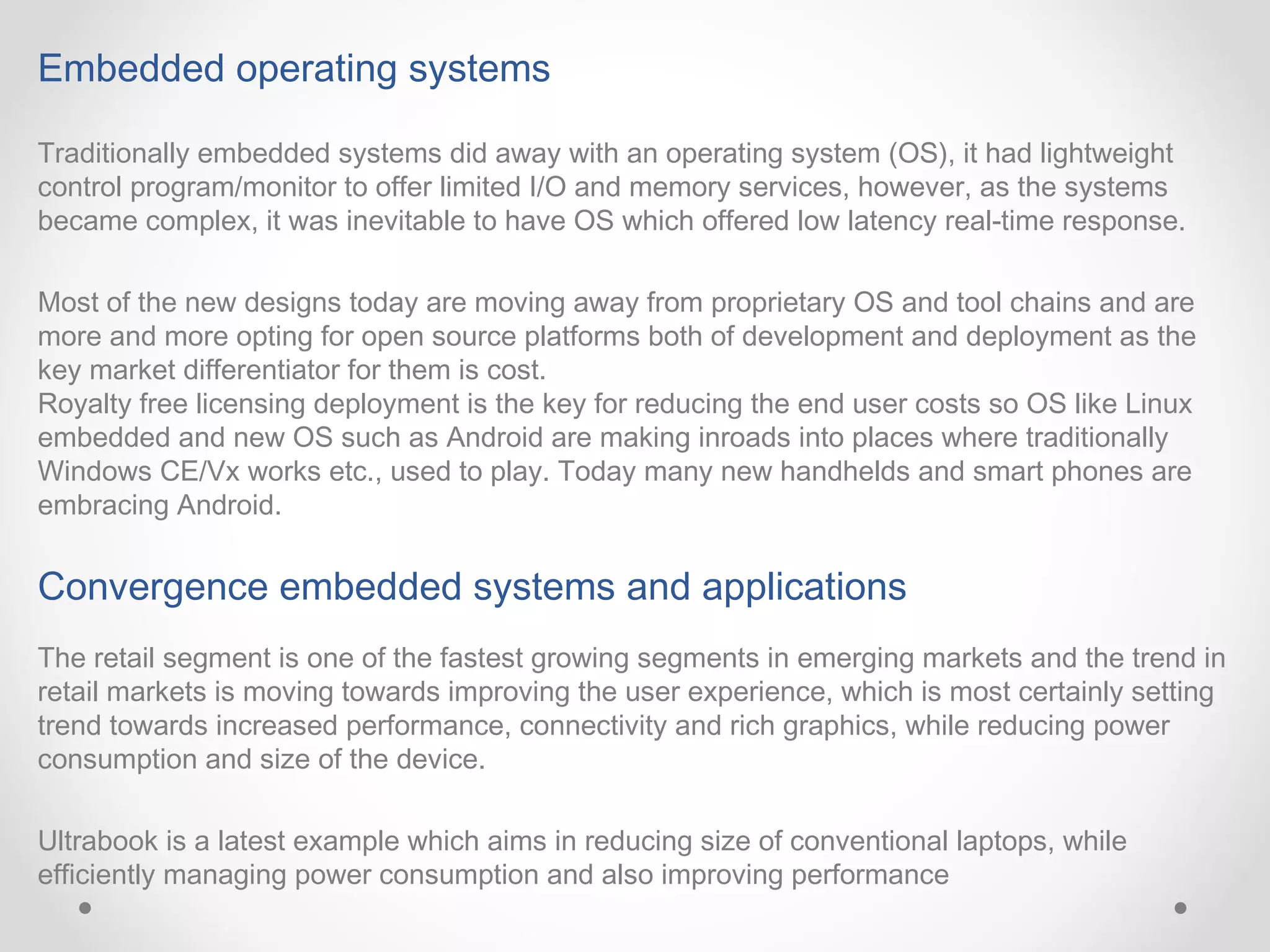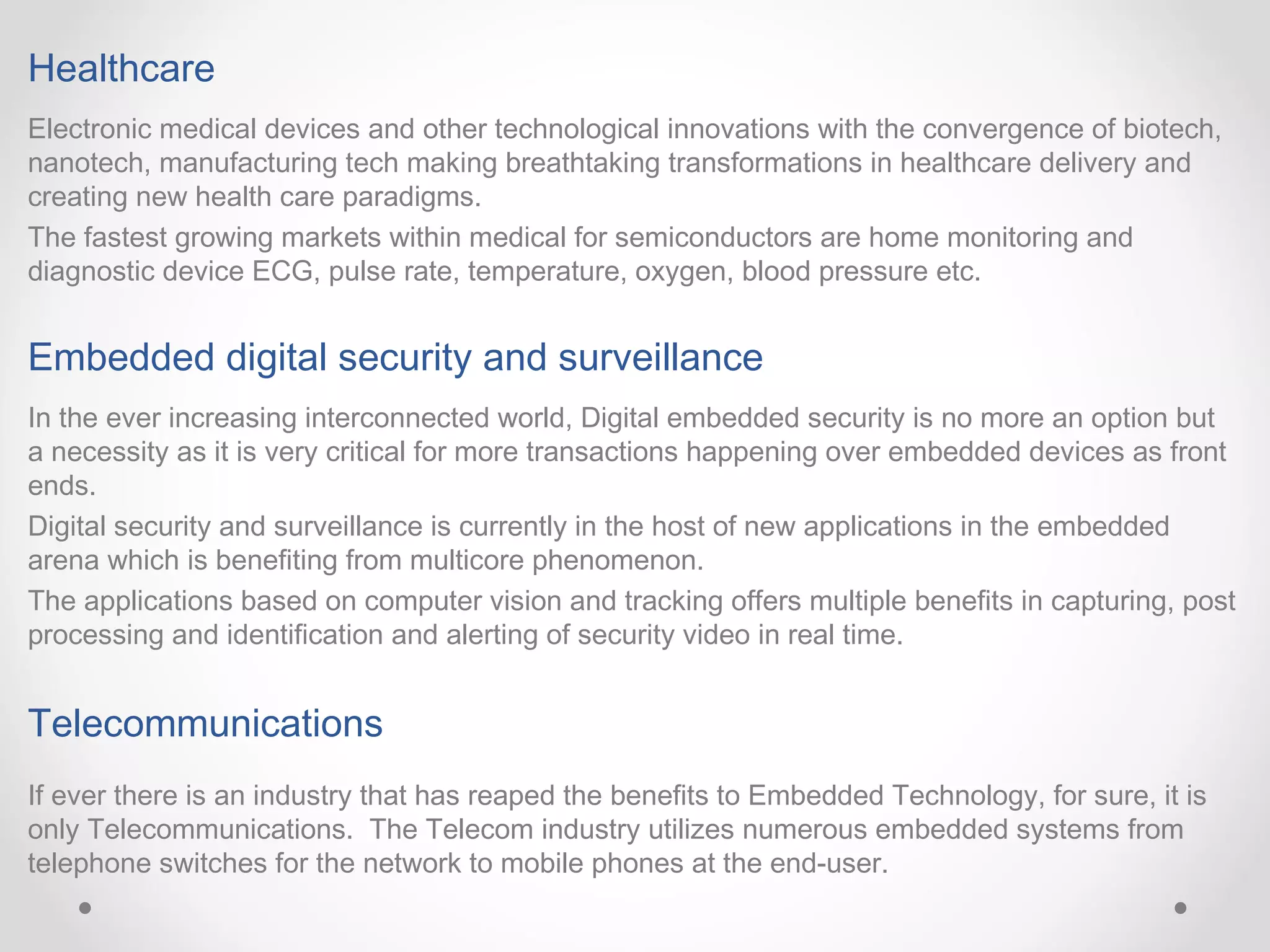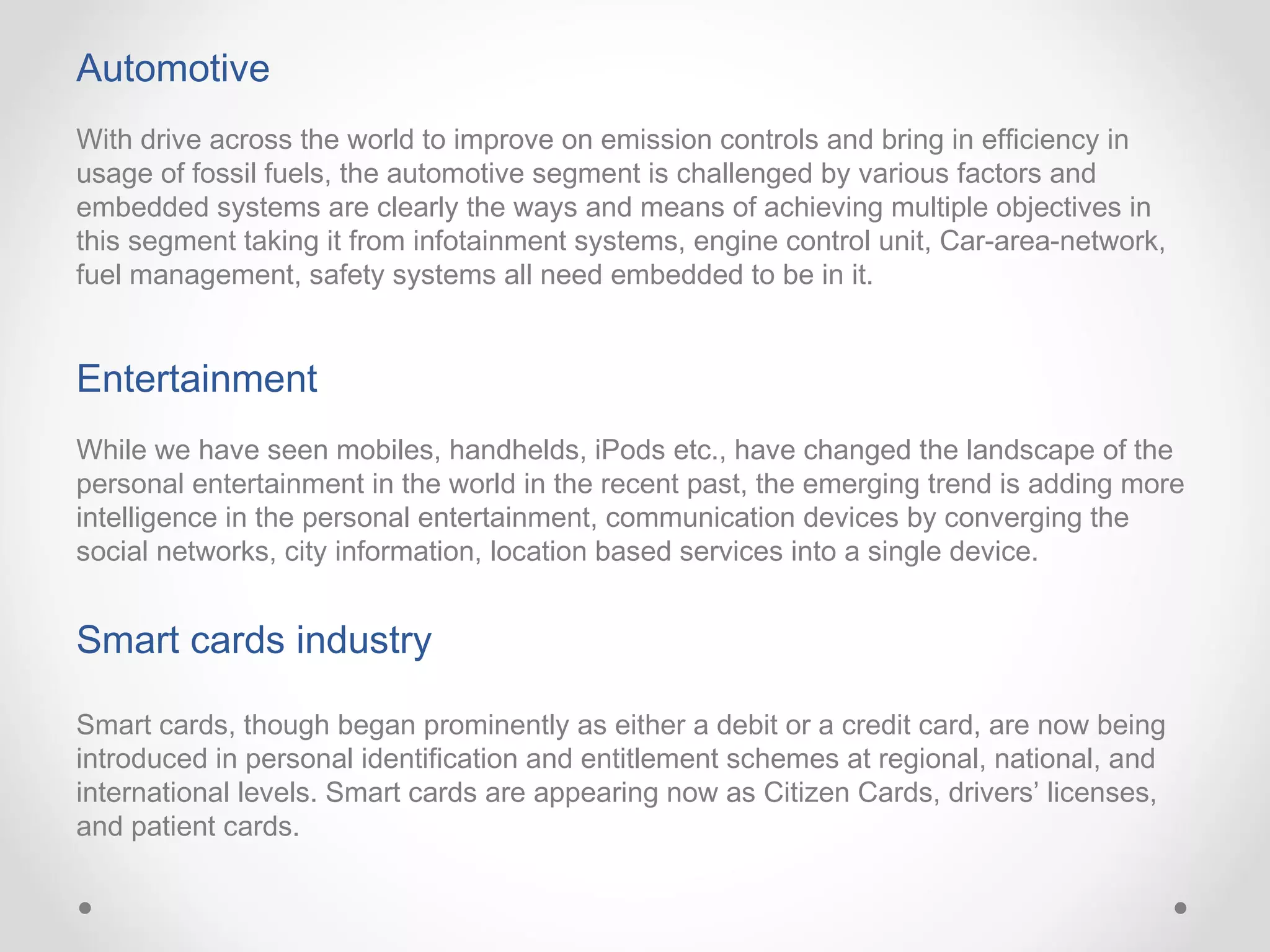An embedded system is a special-purpose computer system designed to perform one or a few dedicated functions, often with real-time computing constraints. Embedded systems are present in many devices such as household appliances, vehicles, medical equipment, smartphones, and more. They typically use microcontrollers or microprocessors to monitor and control embedded hardware components. Key components of embedded systems include a CPU, memory, I/O ports, and timers/counters. Microcontrollers integrate most of these components onto a single chip, while microprocessors require external components. Embedded systems use various addressing modes and have inputs like interrupts and timers that allow them to interact with the external environment. Common applications areas of embedded systems include consumer electronics, industrial automation, automotive systems,
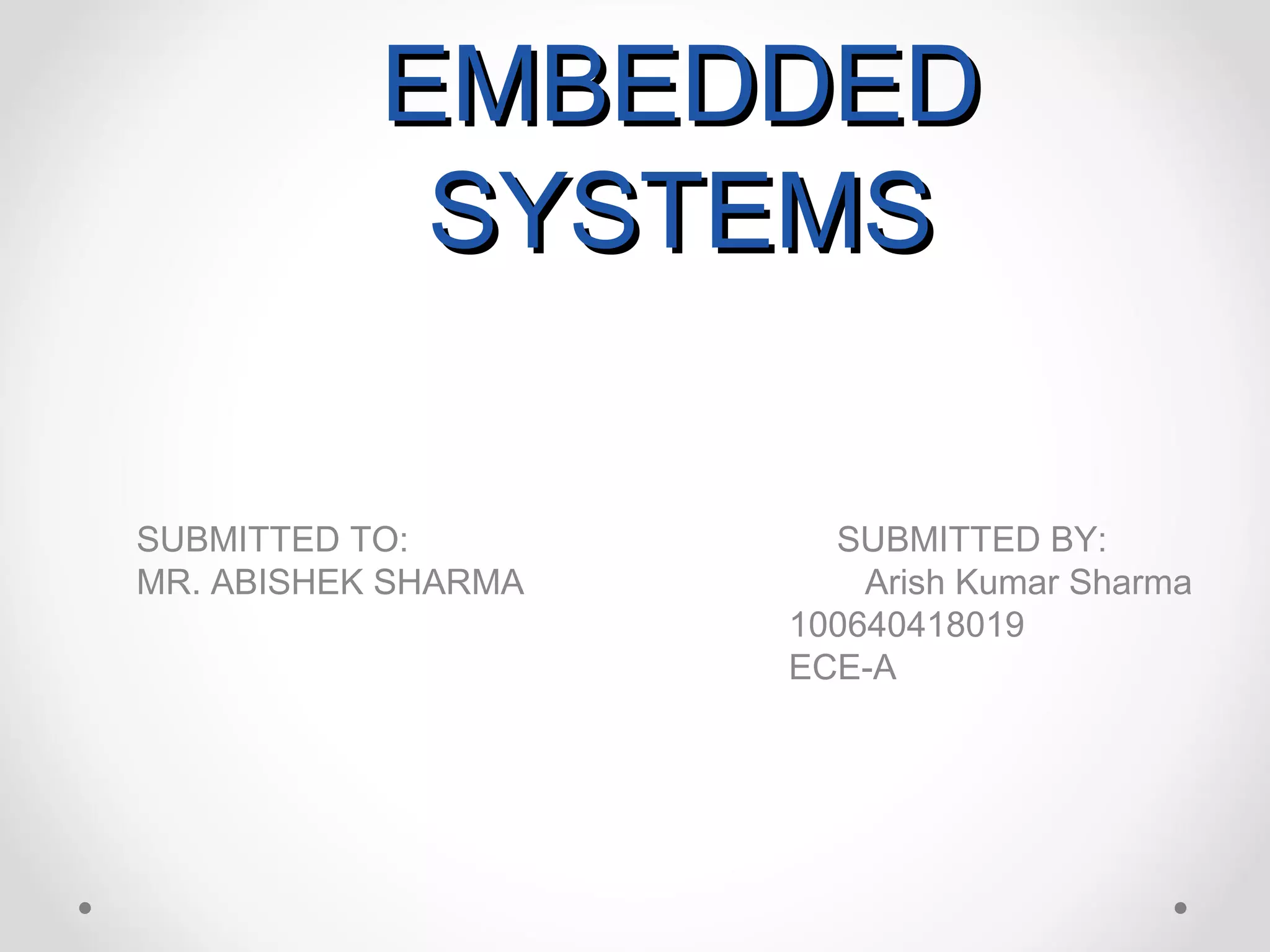
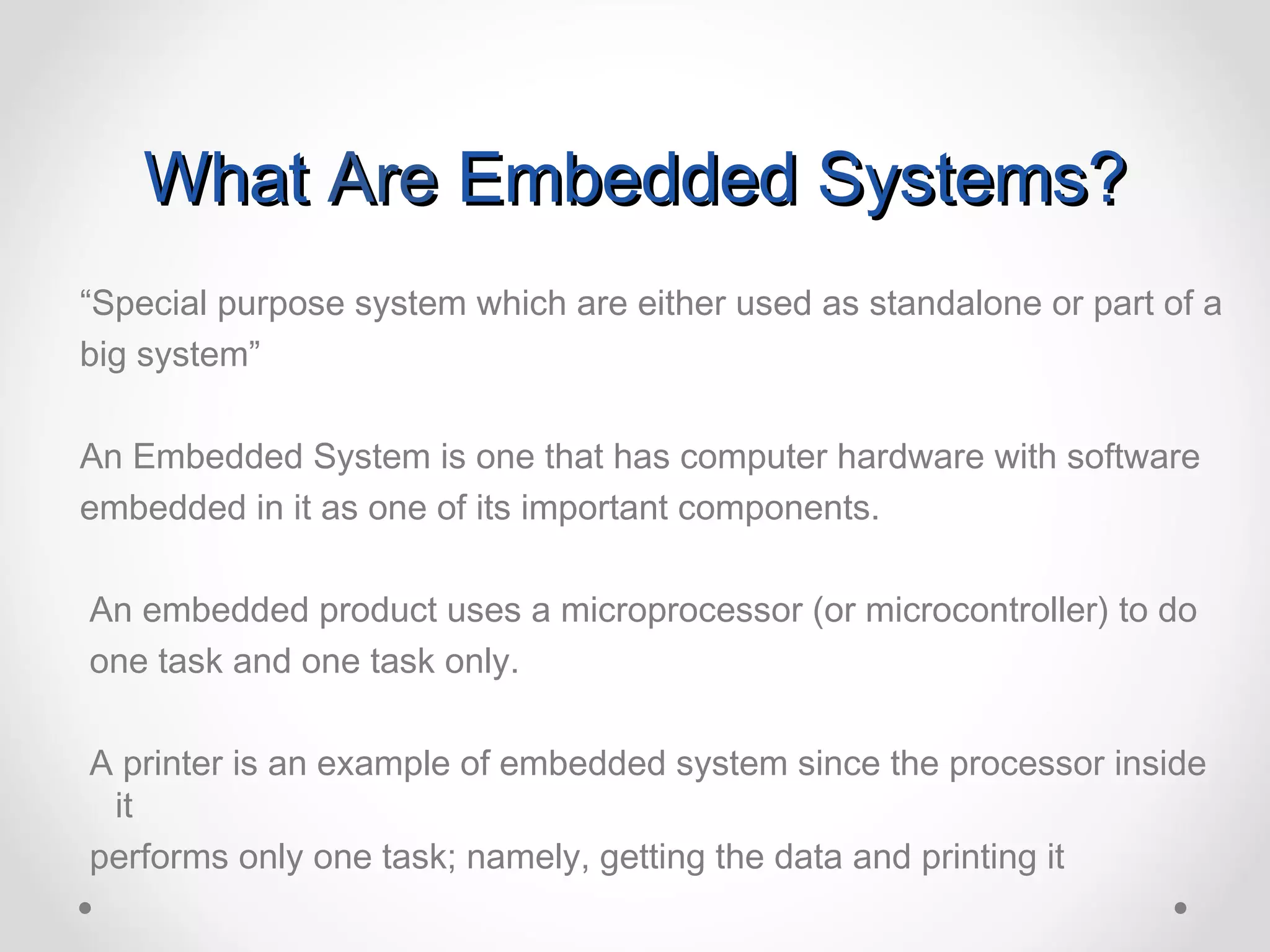
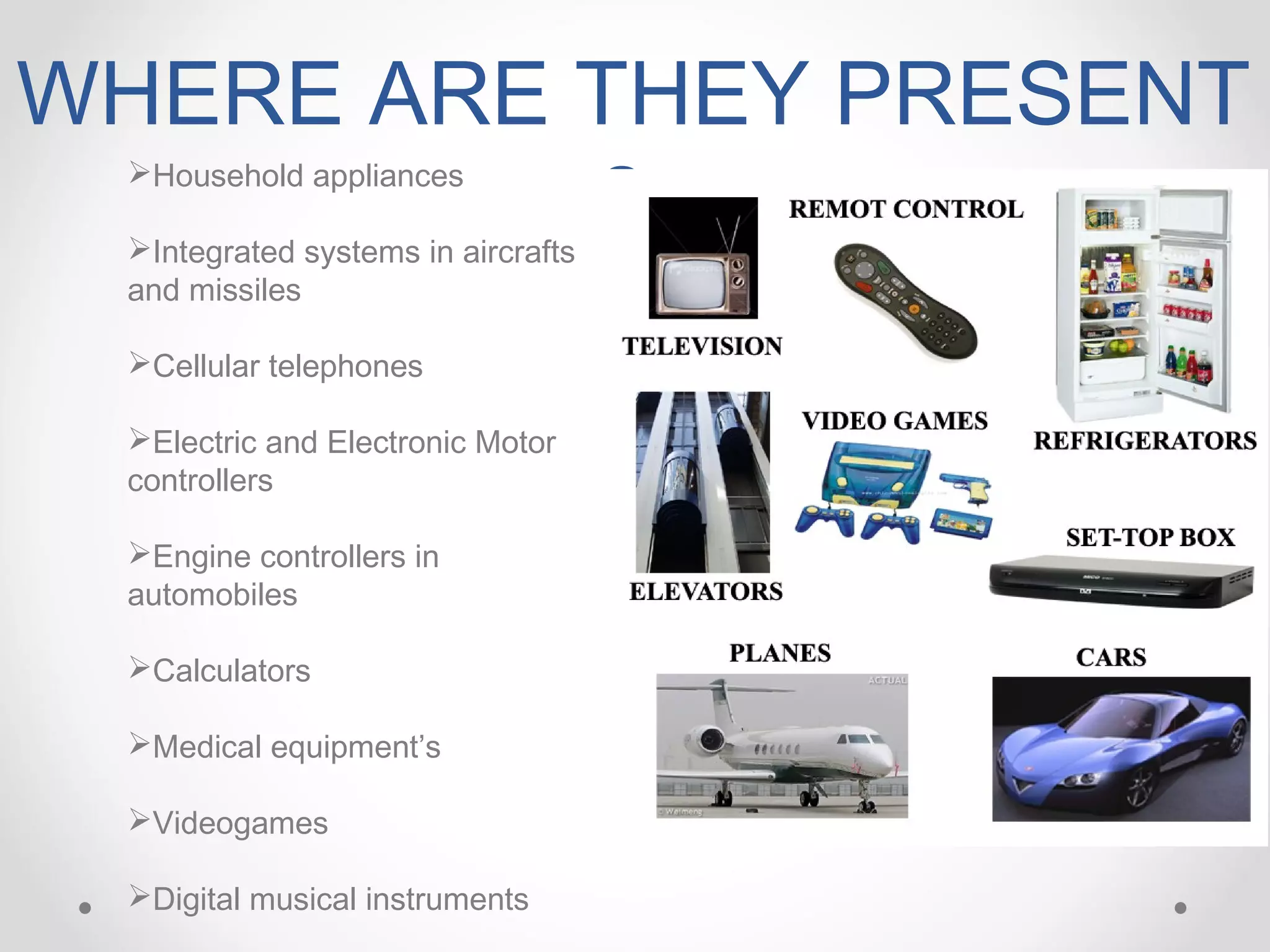
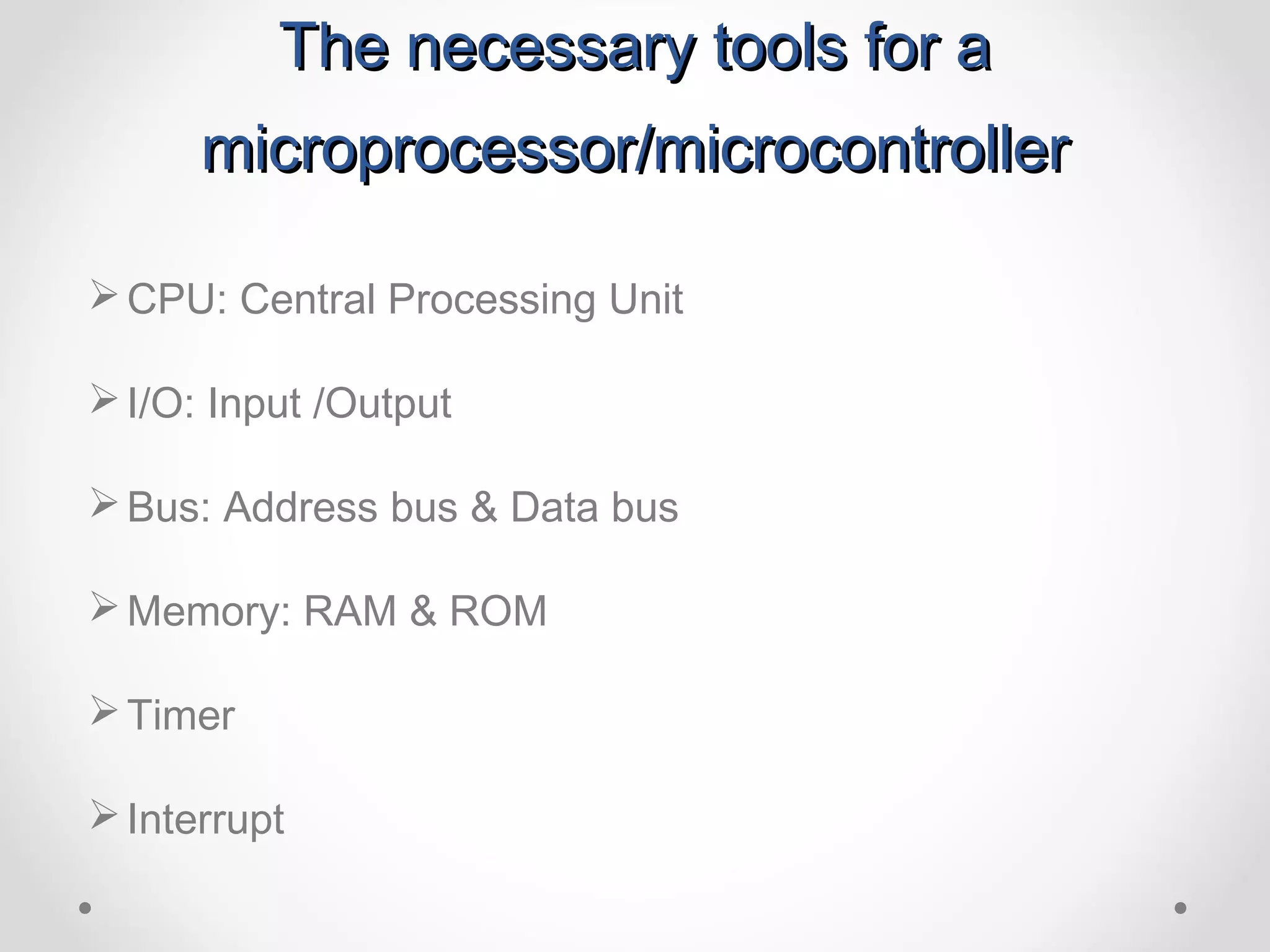
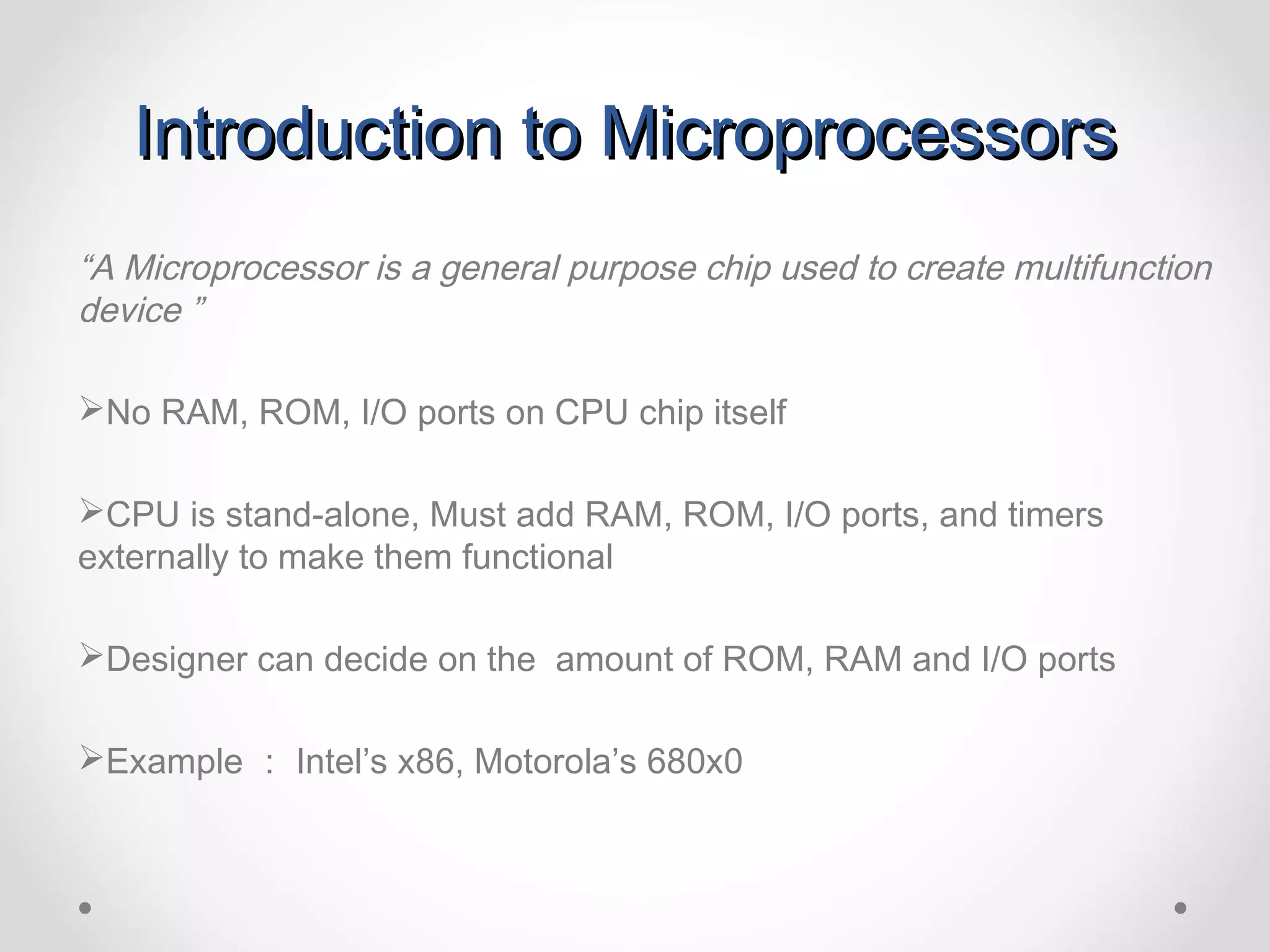
![Introduction to Microcontrollers “A Microcontroller is a computer-on-a-chip optimized to control Electronic devices” CPU + I/O + Timer(s) [+ ROM] [+ RAM] All on single chip Limited RAM space, ROM space and I/O pins Low chip-count to implement a small system Low-cost at large quantities Development tools readily available at reasonable cost](https://image.slidesharecdn.com/arfinal-121026123647-phpapp01/75/Embedded-systems-8051-microcontroller-6-2048.jpg)
